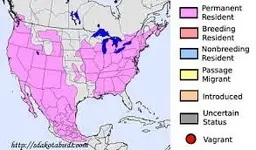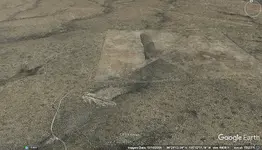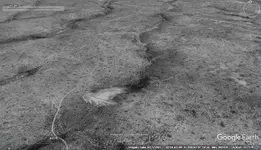Well, ya gotta go past the Spanish/Basque/Jesuits to their "source"... Arabian "influences".
Rebel,
Inspired by your statement, I would like to float an idea I have been mulling over recently about the first entradas.
I have come around to an understanding of the folks who first came to the southwest under the spanish flag.
First, everyone needs to understand that the leaders of the colonizing expeditions, like Onate, were profit seeking adventurers. They made contracts with the king to obtain the rights to exploit a certain area.
The Contractor(conquistador) needed many people to join his enterprise, i.e. soldiers(knights with 4 horses and 2 sets of armour), settlers who would work the land and run the mines(rewarded with land grants) and priests, ;ots of priests to convert the indians and see to the settlers.
Onate was required by contract to build churches. He built 52 in the first year and a half.
The priests were to be franciscan(by contract).
An important point to remember is that in 1598 the Inquisition was in full swing and to be a moslum, a jew or a templar was real trouble.
Such people were killed, fled to the lowlands, or back to morroco or hid is monasteries where they quietly kept their ideas alive.
The colonizing expeditions offered an opportunity for outcasts, both soldiers and settler alike, to change their religion to catholic and get free passage to the new world.
In addition, the sudden need for priests(required by contract to accompany the colony to the new world) gave a chance for open minded free thinking priests that had been educated in monasteries that had housed "confessed" templars and continued teaching their insight, to flee the control of Rome for the new world.
In the 1980s it became common knowledge that many original spanish families in the northwest mountains of New Mexico had in the possessions and in their customs relics from jewish culture. They have become called "crypto jews"
They hid in the mountains of NM for 300 years without being known.....
There is a large indian pueblo, which at the time of the Pueblo revolt in 1680 had many spanish priests. All priest were killed in New Spain and at this pueblo one day in August 1680 except one priest at this pueblo was kept alive because he had taught them templar teachings and rituals and was a leader of that group which had become a "secret society/clan" at the pueblo. Early american masons who came west were astounded to meet brothers. The society is still there today.
So, my idea is that Most, if not ALL of the folks who came to the Southwest in the first 100 years(1580 to 1680) were in some way not really who the said they were. People will do just about anything to provide for the survival of their families or their philosophy. Changing religion and holding your tongue are quite doable when the prospect of FREEDOM is offered.
Another point to remember is that maps and mapping were the "nuclear secrets" of their day.
WH











 This did lead to some interesting reading about the numerous Rio Grande Watershed conservation projects and the continuing encroachment of tribal lands by the Taos township.
This did lead to some interesting reading about the numerous Rio Grande Watershed conservation projects and the continuing encroachment of tribal lands by the Taos township.